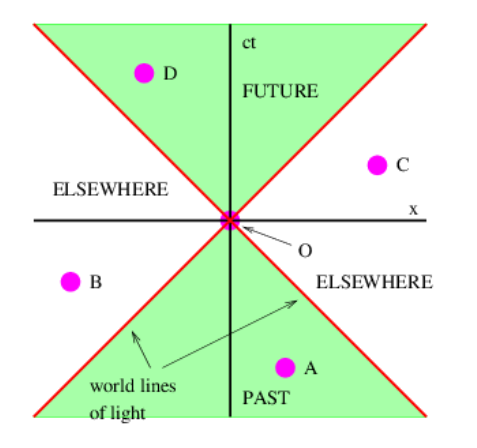4.2: Spacetime Thinking in Special Relativity
( \newcommand{\kernel}{\mathrm{null}\,}\)
In special relativity we find that space and time “mix” in a way that they don’t in Galilean relativity. This suggests that space and time are different aspects of the same “thing”, which we call spacetime.
If time and position are simply different dimensions of the same abstract space, then they should have the same units. The easiest way to arrange this is to multiply time by the maximum speed, c, resulting in the kind of spacetime diagram shown in Figure 4.2.3:. Notice that world lines of light have slope ±1 when the time axis is scaled this way. Furthermore, the relationship between speed and the slope of a world line must be revised to read
v=c slope ( world line ) .

Notice that it is physically possible for an object to have a world line which connects event O at the origin and the events A and D in Figure 4.2.3:, since the slope of the resulting world line would exceed unity, and thus represent a velocity less than the speed of light. Events which can be connected by a world line are called timelike relative to each other. On the other hand, event O cannot be connected to events B and C by a world line, since this would imply a velocity greater than the speed of light. Events which cannot be connected by a world line are called spacelike relative to each other. Notice the terminology in Figure 4.2.3:: Event A is in the past of event O, while event D is in the future. Events B and C are elsewhere relative to event O.


